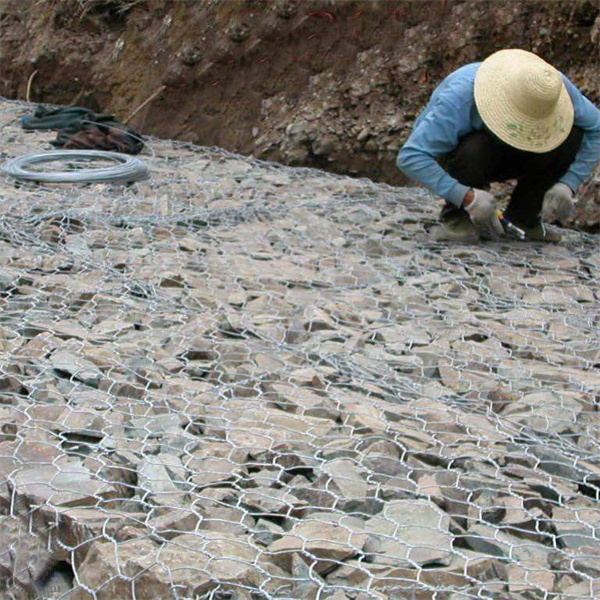ธ.ค. . 11, 2024 11:14 Back to list
gabion wall cost per foot
Understanding the Costs of Gabion Walls A Comprehensive Guide
Gabion walls, consisting of wire mesh cages filled with rock, stone, or other materials, have gained popularity in various construction and landscaping projects. Their strength, versatility, and aesthetic appeal make them an attractive option for many applications, including erosion control, slope stabilization, and decorative landscaping. However, one of the most crucial considerations in planning a gabion wall project is understanding the cost per foot. In this article, we will explore the different factors that contribute to the total cost of gabion walls, giving you a clearer picture of what to expect.
What is a Gabion Wall?
Before delving into costs, it's essential to understand what a gabion wall is. A gabion is a wire mesh container or cage, typically made from galvanized steel or PVC-coated materials, filled with stones or other filler materials. These walls are renowned for their durability and the effectiveness of their drainage capabilities, allowing them to withstand significant pressure from soil and water. Gabion walls can also be designed to fit various aesthetic needs, enhancing the appearance of any landscape.
Cost Breakdown
The cost of gabion walls can vary significantly based on several factors, including materials, installation, and location
. Here is a breakdown of the various elements that will influence the cost per foot of a gabion wall
1. Materials The most significant portion of the cost derives from the materials used in constructing the gabion wall. The price of the wire mesh cages, the type of rocks or stones used as fillers, and any additional fixings or reinforcements will impact overall expenses.
- Wire Mesh Prices for wire mesh can vary based on the gauge and coating. Galvanized options tend to be more expensive than uncoated alternatives but offer longer-lasting durability. - Filler Materials Natural stones, crushed concrete, and even recycled materials can serve as filler, with costs fluctuating based on availability and region.
2. Labor Installation costs can vary based on whether you hire a professional contractor or take on the project yourself. Labor costs typically include site preparation, transporting materials, and assembling the gabion cages. Depending on the complexity and size of the project, hiring professionals might be advisable, particularly for larger walls or challenging landscapes.
gabion wall cost per foot

3. Site Conditions The geographical location and soil conditions where the gabion wall will be constructed can significantly impact costs. For example, rocky or uneven terrains may require additional labor and equipment, increasing the overall price. Similarly, remote locations may incur higher transportation costs for materials.
4. Design Complexity Simple straight walls will generally cost less than highly customized shapes or designs that require additional engineering and support. Curved walls or those with integrated seating or landscaping features will also increase costs due to the additional labor and materials required.
5. Permitting and Regulations Depending on your locality, there may be regulations or permits needed for constructing a gabion wall, especially in areas prone to erosion or flooding. Considering these costs and logistical requirements is essential in the planning stage.
Average Costs
While it's difficult to provide an exact average cost for gabion walls, a general range can offer some guidance. Typically, barring special designs or massive scale constructions, the costs can range from $15 to $30 per linear foot, including materials and labor.
For instance, purchasing the wire mesh cages and filling stones separately might cost about $10 to $20 per foot for the materials alone. Adding labor might increase this to the aforementioned range. Larger or more complex projects will naturally push costs higher, potentially exceeding $30 per foot when additional considerations are factored in.
Conclusion
Understanding the potential costs of gabion walls is vital for anyone considering this effective construction method. The longevity, stability, and visual appeal of gabion walls make them a worthwhile investment, but it's crucial to account for all associated expenses before initiating a project. By acknowledging the various factors affecting the cost per foot and planning accordingly, you can ensure your gabion wall meets both your functional and aesthetic needs without breaking the bank. As with any construction project, it’s always advisable to seek estimates from multiple suppliers and contractors to find the best value for your specific needs.
-
Why PVC Coated Gabion Mattress Is the Best Solution for Long-Term Erosion Control
NewsMay.23,2025
-
Gabion Wire Mesh: The Reinforced Solution for Modern Construction and Landscape Design
NewsMay.23,2025
-
Gabion Wall: The Flexible, Seismic-Resistant Solution for Modern Landscaping and Construction
NewsMay.23,2025
-
Gabion Wall Solutions: The Durable, Decorative, and Affordable Choice for Every Landscape
NewsMay.23,2025
-
Gabion Basket: The Durable and Flexible Alternative to Traditional Retaining Walls
NewsMay.23,2025
-
Gabion Basket: The Proven Solution for Slope Stability and Flood Control
NewsMay.23,2025
-
Versatility of Chain Link Fence Gabion
NewsMay.13,2025






